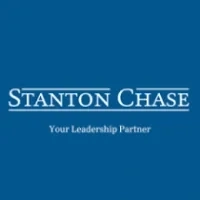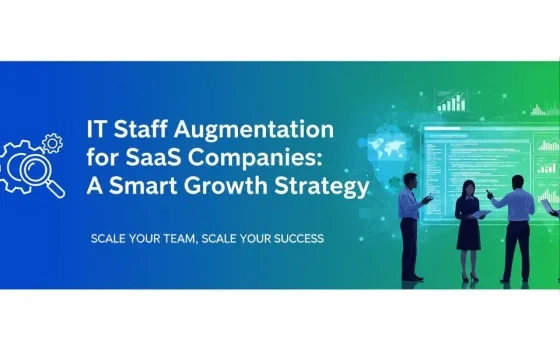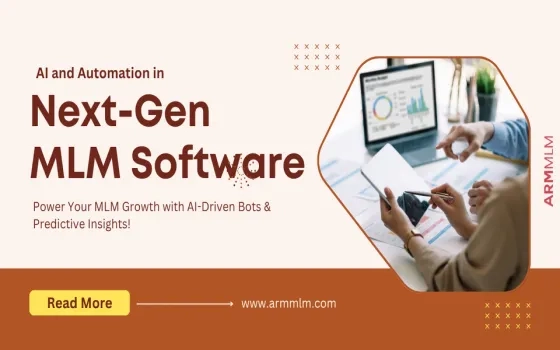With a surge in cloud applications, CSPs look to stay ahead of the game
The Indian telecom industry has witnessed a huge disruption in the past decade and is undergoing a digital transformation faster than any other trailing market. With such exponential growth, India is now home to the second-largest telecom industry in the world with a subscriber base of over 1.17 billion, according to the Telecom Regulatory Authority of India (TRAI). A recent Ericsson Mobility Report predicts smartphone subscriptions will grow from 560 million in 2018 to 1 billion in 2024. Similarly, monthly data traffic per smartphone is expected to increase at 23% CAGR from 4.6 GB in 2018 to 16 GB in 2024.
The goal of India’s current National Digital Communication Policy is to increase broadband penetration, and the number of subscriptions will soon reach the billion mark. With the onset of 5G technology, there are even more ways to innovate. Communication/carrier service providers (CSPs) realize that now is the time for them to become more dynamic and reconsider their role in the industry.
The Changing Role of CSPs
E-commerce services, video-streaming services such as Netflix, social media apps like Facebook and Instagram, and messenger services like WhatsApp are businesses that rely on the data connectivity provided by CSPs but have created a niche for themselves and become integral to how people consume data. This has caused a disruption in CSP business and revenue models, pushing them out of their comfort zones and forcing them to take remedial action. To remain relevant and generate new revenue streams on a competitive market, CSPs are slowly but surely transforming themselves into digital service providers (DSP) offering consumers and businesses a broad mix of services including media services and the mission-critical Internet of Things (IoT).
A DSP is a service provider that has evolved from offering just the core telecom services to providing a multitude of services to customers including broadband access, content services, personalized and contextualized data services, real-time usage alerts, and mobile apps. DSPs are more agile, responsive, and adaptable to consumer preferences. The CSP-to-DSP transformation takes place in critical areas such as enhancing the customer experience, accelerated time to market in the launch of new products and digital services, a reduction of CAPEX and OPEX, and an increase in revenues.
Mary T. McDowell, CEO of Mitel, says that in the business communications and collaboration market, they are seeing a growing number of companies moving to the cloud because “it allows them to move faster, increase productivity, and focus on their core business rather than managing a communications infrastructure.”
“Technology has not only changed the way people consume information but also how they work and stay connected,” she says. “The experiences consumers have come to expect from technology in their personal lives – speed, personalization, optionality – are forcing businesses to rethink how they engage with customers.”
The Solution Lies In The Cloud
While offering huge benefits to CSPs, this transformation also demands a shift in the way CSPs operate. It requires CSPs to evolve and innovate without spending huge amounts on changing infrastructure and hardware. The solution they’ve found is in telco cloudification.
Telco cloudification refers to hosting or using network resources and services from the cloud. They could be private and thereby accessible to only select users, public, or hybrid, which have exposure to the external world. The cloudification can happen at different levels: cloud-enabled, wherein some services still use legacy systems while others are provided through the cloud; cloud-based, where the entire network is in the cloud; or cloud-native, where the services are built in the cloud. The goal of all service providers is to move to the cloud-native phase, where everything is built for and functions in the cloud, and CSPs are able to leverage the cloud to provide connectivity services and cloud services such as IaaS, PaaS, and SaaS to their customers.

Figure 1: Features and Benefits of a Telco Cloud
Cloudification is done by either utilizing public cloud services offered by vendors such as Microsoft Azure, Google Cloud, or Amazon Web Services (AWS) to name a few or building or customizing their own telco cloud. Service providers may initially use the public cloud and transition into building their own cloud to ensure greater flexibility and control.
The crux of successful cloudification and CSP-to-DSP transformation lies in agile architecture and open platforms. As shown in the illustration below, many technologies work together to make cloudification effective and impactful.

Figure 2: Key Components of a Telco Cloud
Building the Telco Cloud
The first step in cloudification is the virtualization and softwarization of networks, which CSPs achieve with a combination of network functions virtualization (NFV) and software defined networks (SDN).
NFV originated with the formation of the European Telecommunication Standards Institute, which sought standardized and agile methods to accelerate deployment of new services, consolidate hardware, and generate revenues. NFV, with its multilayered architecture, virtualizes network functions into modular building blocks called virtualized network functions (VNFs). NFV replaces traditional, custom-designed network equipment (black boxes or purpose-built hardware) with generic hardware or commercial off-the-shelf (COTS) hardware that use software to provide a host of different VNFs. By doing this, NFV provides a highly efficient platform of dynamically allocated computing resources that can perform any network function with intelligent policy-based control.
Another component that helps CSPs in the cloudification process is SDN. SDN further abstract the network’s control plane from the underlying data plane. Unlike traditional architecture that is hardware-dependent, SDN use software to enable efficient, centralized routing. By enabling networks to directly connect to applications through application programming interfaces (APIs), SDN increase the performance and security of applications and create a flexible, dynamic network architecture that can be changed as needed. This decoupling helps significantly reduce operating costs.
The NFV and SDN Interplay
NFV and SDN are two important pillars of telco cloudification that are closely related and independent yet complementary and mutually beneficial technologies. Network functions can be virtualized and deployed without SDN technologies, and nonvirtualized functions can be controlled by SDN. The primary difference between the two is that NFV replaces the proprietary hardware with software running on standard servers while SDN replace standardized networking protocols with centralized control. When working together, SDN complements NFV by providing the programmable connectivity between VNFs and NFV complements SDN by implementing its network functions using software on COTS servers.

Figure 3: SDN and NFV Interplay
Open Source And DevOps – The Enablers
Open-source development, along with NFV and SDN, is the third pillar that accelerates telco cloudification by providing necessary innovation and development in a timely manner. Telco cloudification requires CSPs to deploy solutions from different vendors and have them work seamlessly across the network. In addition to this, the cloud network enables the rapid deployment of networks and solutions. Only an ongoing and integrated process of continuous development and continuous deployment can deliver the agility benefits of NFV and SDN. This multi-vendor approach and the need to develop solutions rapidly and continuously have led service providers to embrace open source and DevOps.
“Effectively transitioning to the cloud is not just about making technology or network changes; it also requires cultural change in terms of process, organizational skillsets, metrics, and even employee mindset,” says Mitel’s McDowell. “It takes time to transform, but it’s like that old saying, ‘Go slow to go fast’ — once you do, you can be much more agile and ultimately, create better experiences for your customers.”
DevOps is a set of practices that automates the processes between the various software teams so that they can build, test, and release solutions faster and more reliably. Similarly, open source helps service providers find effective standardized solutions faster from a highly talented pool of engineers and developers at reduced cost and investment. Open-source organizations like Linux Foundation (LF), Cloud Native Computing Foundation (CNCF), TIP (Telecom Infra Project), Open Compute Project, and Open Networking Foundation (ONF) attract talent and provide tools, training, and events to scale any open-source project and come up with innovative solutions. They develop solutions in an open, extensible manner instead of proprietary development by each CSP. Open-source projects such as OpenStack and OPNFV have the connective elements that help SDN and NFV to work together with greater flexibility.
Performance At The Edge: Extended And Distributed Cloud Network
Along with NFV, SDN, and open source, another key component that is changing the way CSPs operate and transform is edge computing. Many consider it a critical third component together with open source. The emergence of IoT has introduced new challenges to CSPs such as network congestion, high latency, capacity constraints, resource-constrained devices, poor real time-effectiveness, and performance and security bottlenecks, which cannot be adequately addressed by the centralized telco cloud.
Data center traffic is growing fast due to the surge in cloud applications. Cisco’s seventh annual Global Cloud Index study forecasts global cloud data center traffic to reach 19.5 zettabytes (ZB) per year by 2021, up from 6.0 ZB per year in 2016 (3.3-fold growth or 27% CAGR from 2016 to 2021). Globally, cloud data center traffic will represent 95% of total data center traffic by 2021, compared with 88% in 2016.
This means telco core clouds will be deluged with traffic. To prepare for this, many IoT developers and manufacturers are processing their critical data locally or on “the edge.”
Edge clouds are groups of local micro-data centers that take some of the burden off the core telco cloud by handling local tasks instead of sending it the core cloud situated elsewhere. Edge computing is considered a subset of another overarching concept called fog computing. Fog computing is defined as the architecture that distributes resources and services of computing, storage, control, and networking anywhere along the continuum from the core cloud to edge devices. It works to improve the efficiency of data transported to and from the edge device to the telco cloud for further processing, analysis, and long-term retention.
By keeping the core apps and databases in the core cloud and migrating the computing and intelligence functions to the edge, CSPs will be able to optimize network routing, enable low-latency processing, and enhance data security. Virtualization of the end points in the edge cloud will also drive innovation and help in providing new products. The ETSI-recommended multi-access edge computing (MEC) serves as the standard and reference architecture for edge computing.

Figure 4: Edge Cloud Hierarchy
CSPs have approached the cloudification and digital transformation with different strategies suiting their business needs, and various CSPs are at different phases of transformation. Those that have been most successful in the transformation are emerging as the Tier 1 service providers, leading the way for the industry’s growth and success. Virtualization using NFV and SDN, using open-source software, adoption of DevOps and microservices, containerization and orchestration for management of virtual networks, and automation and artificial intelligence are helping CSPs cloudify their networks, and enabling them to design and roll out their new services easily, quickly, and efficiently. The enormous opportunities that 5G presents will help create a robust and agile telco environment that will have major implications for multiple industries, and IoT will undoubtedly play a vital role in further upgradation of the technology. Telco cloudification and the adoption of newer technologies will also lead to organizational skillset and process changes aiding the transformation of CSPs into DSPs and contribute to the telecom industry’s future growth.
About the Author:
Sripad K N Rao is a Managing Partner for Stanton Chase’s offices in Bangalore, Mumbai, and New Delhi. He has over 19 years’ experience in executive search consulting and is the Regional Vice President for the Asia-Pacific region. He heads the firm’s Technology Practice Group across India and the region as well as the Private Equity and Industrial practice groups for India.





















